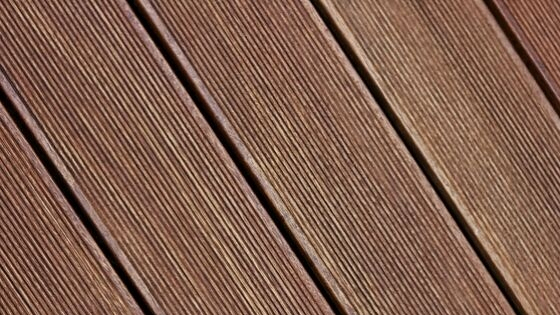This is a subject that is always a hot topic for conversation because sometimes the answers can vary from its better for cleaning if the ripples are down, as if the ripples are up sand will get stuck in the ripples and make it hard to clean and also wear out the varnish.
Other versions include having ripples up for the purpose of non-slip, perhaps around a pool or steps or somewhere the kids might be playing. Either way the slipping rationale is one that always has a good argument.
However, if you get into the technical side of the discussion then a whole new reason pops its head up. Ripples are placed in the timber for the reason of moisture and condensation … the difference between the top surface of the timber and the bottom surface of the timber.
When there has been rain or the timber itself has been wettened what generally happens is that the bottom of the timber stays wet and the top of the timber becomes dry, causing the timber to cup upwards. What the timber machinists do to compensate for this moisture variance and cupping is try to increase the surface area of the bottom with ripples because if you increase this surface area that means more area is exposed so as to dry out and avoid the whole cupping thing. It can also mean more surface area to gather moisture. So having no ripples in the timber at all isn’t probably such a bad idea after all.
The thing is, no matter how you look at it there is always a good argument for both and understanding that if your deck is not going to be exposed to any moisture whatsoever will also validate the argument for ripples up.
So my advice is, when considering your deck think about if the rain is going to get under your deck, how much clearance there is between the deck and the sand, if there is any drainage besides evaporation onto the bottom of the deck, and once you have considered all these things you should have your answer to ripples up or ripples down.
I find dirt the biggest deterrent to having ripples up and of course the higher the chance of cupping occurring to have 99% of my clients opt for ripples down. If you are going around a pool, building steps and the slip thing is a big consideration then an alternative is mod wood or plastic timber decking, as technology has come a long way with this look alike timber and can be considered a viable option and diminishes the risk of cupping.
Also aesthetics and dirt gathering in the ripples plays a big part as well as. If there is no water reaching your deck then there is no slip because dry timber is not slippery. If you are around the pool and want ripples up for slippage reasons then having clearance under the deck with drainage will also help with minimising condensation and moisture build up on the bottom of the deck.
Hope this helps. Take care.

